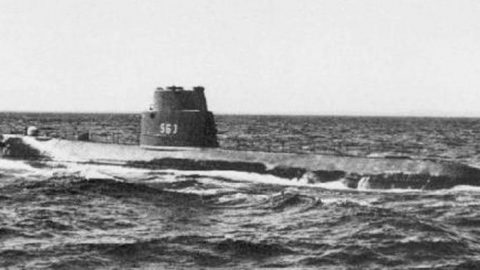
(Smithsonian Channel/YouTube)
The Second World War was fought on land, air, sea and also under the sea. Both sides of the war began implementing submarines to combat to launch sneak attacks on enemy vessels. Submarines were a risky business because even when all felt safe there was a sense of danger, but one reckless Commander decided to push their known limits.
Lieutenant Commander Dick O’Kane was the men who defined submarine warfare during WWII. Many would call him reckless, others called him an innovator but O’Kane took big chances when it came to warfare. O’Kane believed that a submarine had to be on the surface to target an enemy so he made his crew stand on deck to search for enemies. He didn’t dive often but when he took the reigns of the USS Tang he was daring as can be.
“The USS Tang first slipped into the water in 1943, launched and commissioned at Mare Island Naval Shipyard in California with Lt. Cdr. Richard H. O’Kane commanding. The Balao Class fleet submarine, with a crew of up to 10 officers and 80 enlisted men, sank 33 Japanese ships during its five war patrols, earning two Presidential Unit Citations and four battle stars for its World War II service.”
The USS Tang was Balao-class submarine commissioned in October 1943 and with a test depth of 400 ft. Lieutenant Commander O’Kane knew at some point that the sub would have to evade an enemy and 400 ft wouldn’t cut it.
Reckless as he was he ordered his crew to go beyond the limits of the 400 ft and proved that submarines had greater depth capabilities than previously thought. The Smithsonian Channel dives deep into the mission where Lieutenant Commander Dick O’Kane went to a submarine depth unventured before.